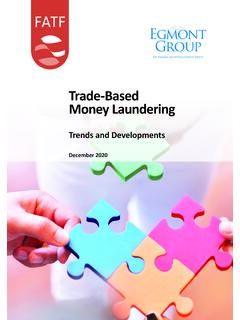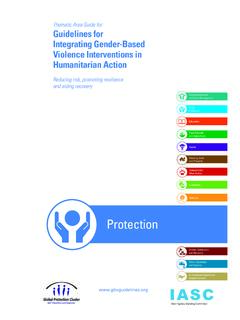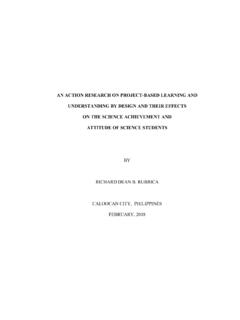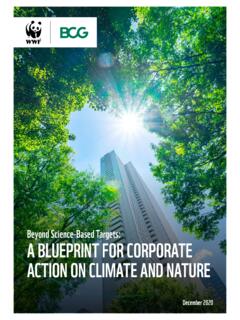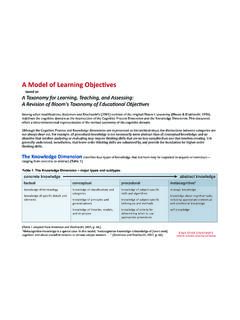Transcription of Two-Stream Adaptive Graph Convolutional Networks for ...
1 Two-Stream Adaptive Graph Convolutional Networks for Skeleton- based action Recognition Lei Shi1,2 Yifan Zhang1,2 * Jian Cheng1,2,3 Hanqing Lu1,2. 1. National Laboratory of Pattern Recognition, Institute of Automation, Chinese Academy of Sciences 2. University of Chinese Academy of Sciences 3. CAS Center for Excellence in Brain Science and Intelligence Technology { , yfzhang, jcheng, Abstract deep-learning- based methods manually structure the skele- ton as a sequence of joint-coordinate vectors [6, 27, 22, 29, In skeleton- based action recognition, Graph convolu- 33, 19, 20] or as a pseudo-image [21, 14, 13, 23, 18, 17], tional Networks (GCNs), which model the human body which is fed into RNNs or CNNs to generate the predic- skeletons as spatiotemporal graphs, have achieved remark- tion.}
2 However, representing the skeleton data as a vector able performance. However, in existing GCN- based meth- sequence or a 2D grid cannot fully express the dependency ods, the topology of the Graph is set manually, and it is fixed between correlated joints. The skeleton is naturally struc- over all layers and input samples. This may not be opti- tured as a Graph in a non-Euclidean space with the joints as mal for the hierarchical GCN and diverse samples in action vertexes and their natural connections in the human body recognition tasks. In addition, the second-order informa- as edges. The previous methods cannot exploit the Graph tion (the lengths and directions of bones) of the skeleton structure of the skeleton data and are difficult to general- data, which is naturally more informative and discrimina- ize to skeletons with arbitrary forms.
3 Recently, Graph con- tive for action recognition, is rarely investigated in existing volutional Networks (GCNs), which generalize convolution methods. In this work, we propose a novel Two-Stream adap- from image to Graph , have been successfully adopted in tive Graph Convolutional network (2s-AGCN) for skeleton- many applications[16, 7, 25, 1, 9, 24, 15]. For the skeleton- based action recognition. The topology of the Graph in our based action recognition task, Yan et al. [32] first apply model can be either uniformly or individually learned by the GCNs to model the skeleton data. They construct a spatial BP algorithm in an end-to-end manner. This data-driven Graph based on the natural connections of joints in the hu- method increases the flexibility of the model for Graph con- man body and add the temporal edges between correspond- struction and brings more generality to adapt to various ing joints in consecutive frames.
4 A distance- based sampling data samples. Moreover, a Two-Stream framework is pro- function is proposed for constructing the Graph convolu- posed to model both the first-order and the second-order tional layer, which is then employed as a basic module to information simultaneously, which shows notable improve- build the final spatiotemporal Graph Convolutional network ment for the recognition accuracy. Extensive experiments (ST-GCN). on the two large-scale datasets, NTU-RGBD and Kinetics- Skeleton, demonstrate that the performance of our model However, there are three disadvantages for the process exceeds the state-of-the-art with a significant margin.
5 Of the Graph construction in ST-GCN [32]: (1) The skeleton Graph employed in ST-GCN is heuristically predefined and represents only the physical structure of the human body. Thus it is not guaranteed to be optimal for the action recog- 1. Introduction nition task. For example, the relationship between the two action recognition methods based on skeleton data have hands is important for recognizing classes such as clap- been widely investigated and attracted considerable atten- ping and reading. However, it is difficult for ST-GCN. tion due to their strong adaptability to the dynamic circum- to capture the dependency between the two hands since stance and complicated background [31, 8, 6, 27, 22, 29, they are located far away from each other in the predefined 33, 19, 20, 21, 14, 13, 23, 18, 17, 32, 30, 34].
6 Conventional human-body- based graphs. (2) The structure of GCNs is hi- erarchical where different layers contain multilevel seman- * Corresponding Author tic information. However, the topology of the Graph ap- 12026. plied in ST-GCN is fixed over all the layers, which lacks for the recognition performance. (3) On two large-scale the flexibility and capacity to model the multilevel seman- datasets for skeleton- based action recognition, the proposed tic information contained in all of the layers; (3) One fixed 2s-AGCN exceeds the state-of-the-art by a significant mar- Graph structure may not be optimal for all the samples of gin. The code will be released for future work and to facili- different action classes.
7 For classes such as wiping face tate communication1 . and touching head , the connection between the hands and head should be stronger, but it is not true for some other 2. Related work classes, such as jumping up and sitting down . This fact suggests that the Graph structure should be data dependent, Skeleton- based action recognition which, however, is not supported in ST-GCN. Conventional methods for skeleton- based action recog- To solve the above problems, a novel Adaptive Graph con- nition usually design handcrafted features to model the hu- volutional network is proposed in this work. It parameter- man body [31, 8]. However, the performance of these izes two types of graphs, the structure of which are trained handcrafted-feature- based methods is barely satisfactory and updated jointly with Convolutional parameters of the since it cannot consider all factors at the same time.
8 With model. One type is a global Graph , which represents the the development of deep learning, data-driven methods have common pattern for all the data. Another type is an indi- become the mainstream methods, where the most widely vidual Graph , which represents the unique pattern for each used models are RNNs and CNNs. RNN- based methods data. Both of the two types of graphs are optimized indi- usually model the skeleton data as a sequence of the coordi- vidually for different layers, which can better fit the hier- nate vectors each represents a human body joint [6, 27, 22, archical structure of the model. This data-driven method 29, 33, 19, 20, 3]. CNN- based methods model the skele- increases the flexibility of the model for Graph construction ton data as a pseudo-image based on the manually designed and brings more generality to adapt to various data samples.
9 Transformation rules [21, 14, 13, 23, 18, 17]. The CNN- Another notable problem in ST-GCN is that the feature based methods are generally more popular than RNN- based vector attached to each vertex only contains 2D or 3D coor- methods because the CNNs have better parallelizability and dinates of the joints, which can be regarded as the first-order are easier to train than RNNs. information of the skeleton data. However, the second-order However, both RNNs and CNNs fail to fully represent information, which represents the feature of bones between the structure of the skeleton data because the skeleton data two joints, is not exploited. Typically, the lengths and di- are naturally embedded in the form of graphs rather than rections of bones are naturally more informative and dis- a vector sequence or 2D grids.
10 Recently, Yan et al. [32]. criminative for action recognition. In order to exploit the propose a spatiotemporal Graph Convolutional network (ST- second-order information of the skeleton data, the lengths GCN) to directly model the skeleton data as the Graph struc- and directions of bones are formulated as a vector pointing ture. It eliminates the need for designing handcrafted part from its source joint to its target joint. Similar to the first- assignment or traversal rules, thus achieves better perfor- order information, the vector is fed into an Adaptive Graph mance than previous methods. Convolutional network to predict the action label. Moreover, a Two-Stream framework is proposed to fuse the first-order Graph Convolutional neural Networks and second-order information to further improve the perfor- There have been many works on Graph convolution, and mance.
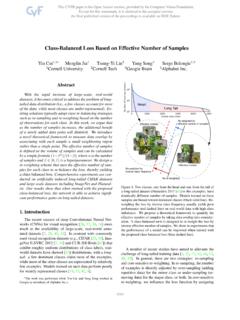
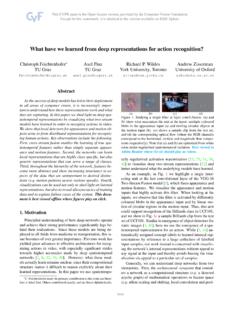
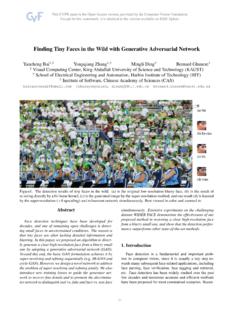
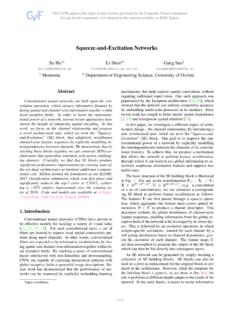
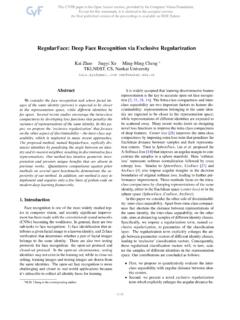
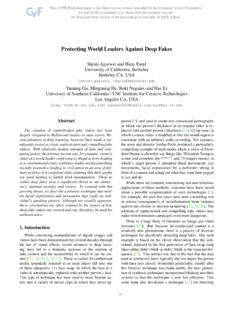

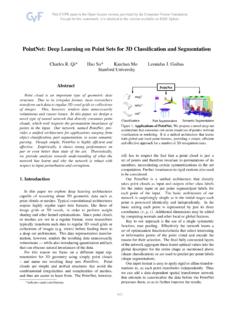
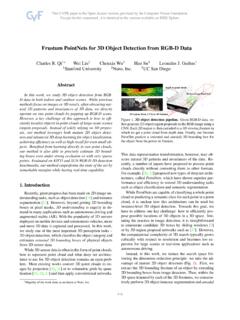
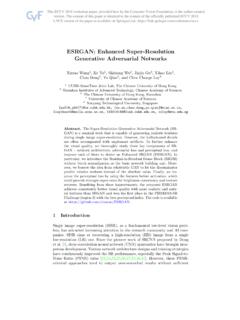
![arXiv:1801.07455v2 [cs.CV] 25 Jan 2018](/cache/preview/c/1/f/1/b/a/a/5/thumb-c1f1baa5f6e090b207f4f18380d23ecd.jpg)

